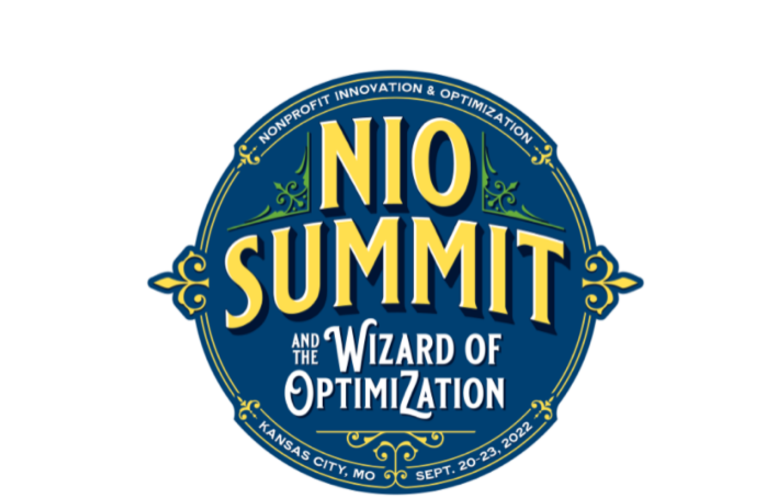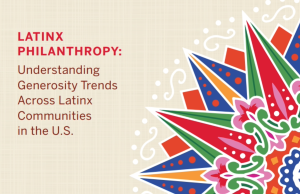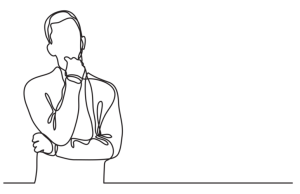Fundraisers can persuade more people to donate if they admit that they don’t know everything and are willing to experiment, an expert in the field said recently during the seventh annual Nonprofit Innovation & Optimization (NIO) Summit in Kansas City.
“The number one trait of a successful fundraiser is humility,” said Jeff Giddens, president of agency NextAfter. “When you say I don’t know, it opens up this whole new world.”
Approximately 880 people attended the event, which offered tips on how to grow online fundraising.
Giddens said humility fosters curiosity, which nurtures experimentation. For example, someone at a nonprofit might want to know if inflation is affecting donor giving. “I’m not some global economist,” Giddens said. “I don’t know. But, we could find out.”
Giddens cited a case where an organization reached out to potential donors who had never given and asked them for smaller donations. The result was a 56% increase in donations and a 28% increase in revenue.
“So does that mean inflation is affecting donor giving? I don’t know. But I know for this organization, and this appeal, if you ask people for a little bit less you might get a lot more,” he said.
In another example, Giddens cited an organization that couldn’t get people on their donor list to sign up for emails that would keep them informed. “Sign up and stay informed” didn’t work, and neither did “get updates and stay connected.”
Finally, someone who didn’t work on that particular account suggested asking people if they would “like” to stay informed, and that “micro ask” was successful in getting more people to sign up.
“All of these experiments show you that it is really difficult as a fundraiser to rely on your own intuition and your own best practices,” Giddens said. “I’ve heard that best practices, if you repeat them often enough, sometimes become pooled ignorance. Everyone starts doing the same thing. But through testing and optimization, you can get more people to say yes.”
Dan Brown, managing consultant of direct response for the consultancy American Philanthropic, advised attendees on how to maximize digital and mail efforts during inflationary times. Brown gave a hypothetical example of an organization that generates 2,000 responses and an average gift of $100 from 50,000 snail mails. He said he would recommend data modeling in such a case.
“You model your file of 50,000 down to about 40,000, dropping people who are least likely to respond,” he said. “That saves you about $10,000. You have to pay for the modeling, but paying for the modeling helps you mail smarter, and you reinvest the savings into digital efforts.”
Brown said the content for a digital donation campaign must be clear, concise, compelling and consistent.
“It has to be clear to someone outside your walls, so they can understand what you’re talking about and what you’re asking them to do. It must be concise. If you sent a four-page letter, you’ve got to condense that down to five-to-seven words in most display ads. It has to be compelling. You have to give them a reason to click. You must have some consistency in some of the words and phrases and looks for it to work together.”
Gabe Cooper, founder and CEO of fundraising platform Virtuous, said too many nonprofits managers stuff donors into a “direct response sausage grinder. No matter how or why these people came in, they’re all getting our November appeal. They’re all getting the same newsletter. They’re all getting the same year-end campaign.”
But because most giving involves a personal connection to a cause, fundraisers need to foster more donor relationships based on the things donors care about, Cooper said. Nonprofits can learn what donors care about by noting behaviors such as volunteering, attending an event, opening an email, downloading an e-book off the organization’s Web site, or showing an affinity for a particular cause, he said.
“If you’re not doing a donor welcome series on multiple channels, then start with that,” Cooper said. “Think about the other behaviors your donors typically do that might be a signal for you two treat them differently. Identify three of them. Send an email, a text message, maybe a phone call, maybe a postcard, all related to that behavior.”
Cooper said fundraisers who follow these strategies are seeing increases in donor retention, gift size and engagement. “And, it shouldn’t surprise us because giving is personal.”
Other speakers at the summit included:
- Marcus Sheridan, keynote speaker and owner of agency IMPACT, said nonprofits must build trust with donors through transparency, and produce videos that address donors’ questions about nonprofits. “Ask donors what they are passionate about.”
- Ardee Coolidge, digital strategist with NextAfter, said organizations should humanize their donation pages, ask donors for less money, and “talk less about yourself and more about your donors. Donors want to be the hero of the story.”
- Bart Schutz, co-founder and owner of firm Online Dialogue, said fundraisers should create content that resonates with donors’ emotions, such as through nudges. Examples include using images of people looking happy or sad.
- Courtney Gaines, a senior vice president with NextAfter, said organizations need to transform donor emotions into ongoing feelings to build better relationships. “Be human and personal. Cultivation e-mails should come from a person.”
- Nathan Hill, vice president of the NextAfter Institute, said too many organizations abandon their donors. “We found that 45% of nonprofits sent nothing to new online donors.” He added that organizations should stop asking donors to do things that might distract them from donating, such as following the organization on social media.
- Dana Snyder, founder and CEO of agency Positive Equation, said fundraisers need to learn what their donors are thinking, feeling and doing, including what they are researching. “Provide the right content to excite participation on the right channels.”
- Shawn Olds, co-founder and CEO of platform boodleAI, said organizations can implement a micro fundraising campaign in four weeks by understanding who their donors are, finding more people like those donors, and delivering targeted digital ads.
- Emily Taylor, principal of the firm teenyBIG, said organizations should engage in prototyping and listening to “create ideas, put them in people’s heads and listen to them to make our ideas better. Welcome negative feedback.”
- Michael King, founder and CEO of search engine optimization firm iPullRank, said that “the more authoritative the content, the better it performs. Avoid duplicate content on your Web site.” King said there are too many content management systems to choose from and organizations should choose systems that provide speed, flexibility and accessibility.
- Krista Seiden, founder and principal consultant of firm KS Digital, said fundraisers should maximize their use of Google Analytics 4, a Web Analytics service. She said users can enter donation funnels at different points to see how many donors are entering at those points, and see what steps people take to donate.
****
Julius Karash is a Kansas City, Mo.-based freelance business writer and a long-time contributor to The NonProfit Times. He is based in Kansas City and his email is [email protected]












